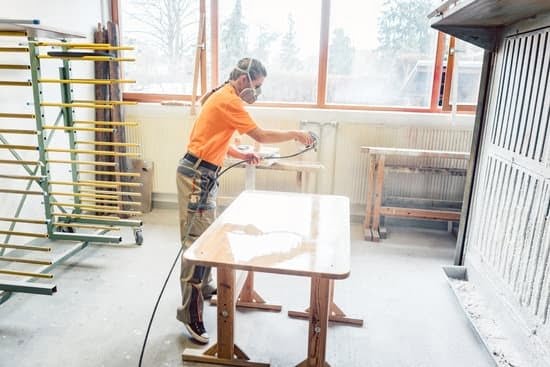Introduction
Ancient woodworking is an ancient craft with a long history. Its origins trace back as far as the Paleolithic era, when humans first began hammering and chiseling wood into utilitarian and decorative objects like tools, furniture, and artwork. Evidence of early ancient woodworking appears in sites across Europe, Asia, and North America which span from over 40,000 years ago to the present.
In more recent times of antiquity, advancements in technology enabled woodworkers to produce bigger and more intricate projects than ever before. This included the rise of a vast array of specialized tools such as saws, lathes, drills, chisels and adzes that could create the most complex shapes with precision. In addition to tools for sculpting the shapes of things from raw timber, ancient cultures developed various stains and dyes for coloring woods or other materials to lend them aesthetic appeal. The purpose for crafting items out of wood were mainly practical but often ceremonial as well; some cultures also practiced magical rituals or employed various symbols that were applied to surfaces through intricate carving techniques to protect their inhabitants or bring about good luck.
Within certain civilizations such as Ancient Egypt or Greece there were powerful guilds of skilled artisans who crafted sophisticated pieces from all types of materials (including metals) with exceptional quality and beauty. Other lesser-known cultures practiced their own unique styles which echoed through generations of freeform folk art utilizing everything from buffalo horns to rosewood stumps; ultimately these works found their way into everything from cabinets to bed frames depending on the artist’s creativity.
Today woodworking continues to evolve alongside advances in technology while preserving its timeless traditions passed downThrough many ages by highly skilled craftsmen around the world. Numerous modern pieces can be seen throughout homes neighborhoods businesses schools government buildings giving us testament that this beloved art form is still going strong today!
The Materials Used in Ancient Woodworking
Ancient woodworking was a craft that in the most primitive of societies required only rudimentary tools and materials. Some of the earliest civilizations such as Sumerian and Chinese bronze age cultures used stone tools to shape and create objects out of wood. Ancient Egyptians were master craftsmen who used tools of copper and other metals, particularly for sculpting wooden figurines, jewelry, furniture and various other objects. Ancient Greeks relied heavily on hand-crafted implements like saws, chisels, hammers and augers to work their wood into structures such as ships and buildings. The Romans, being famed for their engineering exploits, perfected carpentry techniques with sophisticated iron tools which enabled them to build relatively complex structures like bridges and aqueducts out of wood. In Medieval Europe, specialized axes known as the ‘framing axe’ were essential in constructing large buildings made from massive timbers cut using iron saws. Medieval blacksmiths also developed more advanced joinery techniques that gave rise to intricate furniture carvings such as chests featuring greatly detailed surfaces. Other materials used by ancient civilizations in their woodworking included bone, horn, antler and flint which were used for engraving patterns into timber. Waxes were also employed for sealing vessels in watertight packages or for enhancing the decorative elements in fine carving projects. Finally animal hide glue was widely utilized for gluing boards together when creating joints between individual pieces of material.
Ancient Woodworking Techniques
Ancient woodworking techniques are some of the oldest skills known to man. Dating back to prehistoric times, woodworking has been used to create functional and beautiful objects from simple tools like axes and saws all the way up to complex machines, such as lathes, that have revolutionized the craft. Using traditional methods and natural materials, ancient woodworkers could bend, shape and join pieces of wood together quickly and efficiently. From early carpentry for shelter to sophisticated joinery for architecture, most cultures made use of these same principles in one way or another throughout history.
Many ancient civilizations also refined their knowledge of woodworking through trial and error, more commonly referred to as “experimental archaeology”. This method involves studying not only old tools but also how they were used in ancient times. For example, records exists that show that even before the invention of the wheel, ancient Egyptians were capable of creating complicated curves by winding rope around wet wooden planks with precision. Other cultures found success in creating oars and boats using fullers which are essentially planks set into mortises that blend together perfectly when clamped down tight.
An important part of preserving this knowledge is understanding why certain techniques were chosen over others at the time which requires a deep investigation into social systems and environmental conditions present at the time period being studied. By analyzing past choices carefully we can gain insight into what methods worked best then and how those might be adapted for our current needs without compromising much quality or value. This can help in developing new sustainable production techniques while still staying true to old practices that brought us so far in our development of this craft.
Essential Tools of Ancient Woodworking
Ancient woodworking utilized different essential tools in order to create furniture, building structures and other wooden products. Such tools included axes which were used to shape and trim timber, as well as adzes, gouges and chisels all of which had curved blades ideal for hollowing out of materials. Planes were also used for smoothening surfaces; drills for creating holes; saws for cutting and splitting lumber; mallets for striking other tools or driving pegs into place; coping saws and handsaws for making intricate curves; measuring sticks or templates to ensure accuracy when fashioning pieces; braces and bits – a tool consisting of a handle connected to an adjustable drill bit – to bore holes in a piece of wood, among many more.
Decorative Elements of Ancient Woodworking
Ancient woodworking was a highly sophisticated craft practiced by skilled artisans. Many ancient cultures contributed to the development of this skill, as evidenced by the range of exquisite furniture, sculptures, vessels and utensils found in archaeological digs around the world. Decorative elements were an important part of ancient woodworking and could be used to embellish and enhance the pieces that artisans created. Often these decorative elements were made from a variety of materials such as bone, stone, ivory, wood, bronze and silver. Elaborate carvings with floral designs or geometric patterns were common motifs. Intricate marquetry work using multiple colors of wood achieved spectacular effects that combined form and beauty. In addition to these decorations made from natural materials, metal fixtures often finished off pieces in styles unique to each civilization, including detailed metal clasps for furniture and finely crafted reliefs on ornamental caskets. Ancient craftsmen often employed bold color schemes to give their pieces added emphasis while maintaining a sense of balance between soothing colors and vibrant hues. These wonderfully crafted objects remain an enduring testament to the artistic talents of our ancestors.
How Ancient Woodworking Influenced Contemporary Design
Ancient woodworking began long before the Industrial Revolution and has had a lasting impact on contemporary design. With the technological advancements in tools, more complex and intricate designs became possible using wood as a material. Early nations like the Egyptians, Greeks and Romans developed new techniques for sawing, planing, laminating and joining wood to create furniture with unique qualities. Their understanding of joinery advanced the construction process to allow for more stability, dimensional accuracy, reinforced connections and longer-lasting pieces.
The introduction of basic tools such as hammers, chisels and saws allowed ancient craftsmen to carve complex patterns and cut intricate shapes into solid pieces of wood. This technique was used to create luxury furniture that featured things like turned legs or serpentine edges. Additionally, they developed carving methods like chip carving which was used to decorate pieces or add special details in many ancient societies. Ancient techniques have influenced modern furniture design in ways such as curved laminated veneer lumber which is often seen in chairs today that imitate hand carving of the past.
Beside joinery, ancient artisans were skilled in finish work with materials such as wax, shellac and varnishes that protected their pieces from wear and UV rays while maintaining their beauty. Finishes such as oil waxes remain popular today and provide durable protective layers with vivid natural colors that mimic early finishes from centuries ago. Ancient woodworking is also credited for beginning the notion of building cabinets within framed walls which became common practice for generations afterwards due its space saving features it provided before small space living become fashionable trend today.
Overall contemporary design draws heavily from ancient woodworking through the use of tools, joinery methods and finishes that protect our furnishings against age related deterioration while adding significant beauty to them at the same time by highlighting natural grain patterns or artistic carvings of times pasts!
Conclusion
The ancient woodworking traditions of the world are still relevant today. Carpenters, in whatever language they go by, have been influencing our lives through their ingenious use of materials and craftsmanship for thousands of years. While modern tools and technology continue to streamline production processes and create innovative pieces that otherwise would be difficult or impossible to make, we must not forget the ancestral roots of this practice and its profound impact on both the future of architecture and handcrafting.
Passing down generations-old techniques helps us pay homage to our ancestors’ hard work. Woodworking methods such as dowel joinery, peg and mortise joints, and steam bending showcase their relentless spirit, perseverance, and fortitude— all qualities that are still admired today. By incorporating these traditions into new projects as well as preserving them through collections or displays in museums or galleries, we can ensure a bright future while maintaining respect for our past.
In addition to keeping essential techniques alive, ancient woodworking acts as an important reminder that if you put your heart into something it will eventually pay off – no matter how long it takes. We should embrace the long-established customs because they provide us with infinite possibilities for making striking products that reflect the knowledge of previous ages while following environmentally friendly practices when using sustainable sources of lumber. Embracing ancient woodworking helps push professional practices forward while also preserving history – a balance which is vital for finding harmony between people and nature in every corner of the world.

Hi everyone! I’m a woodworker and blogger, and this is my woodworking blog. In my blog, I share tips and tricks for woodworkers of all skill levels, as well as project ideas that you can try yourself.




